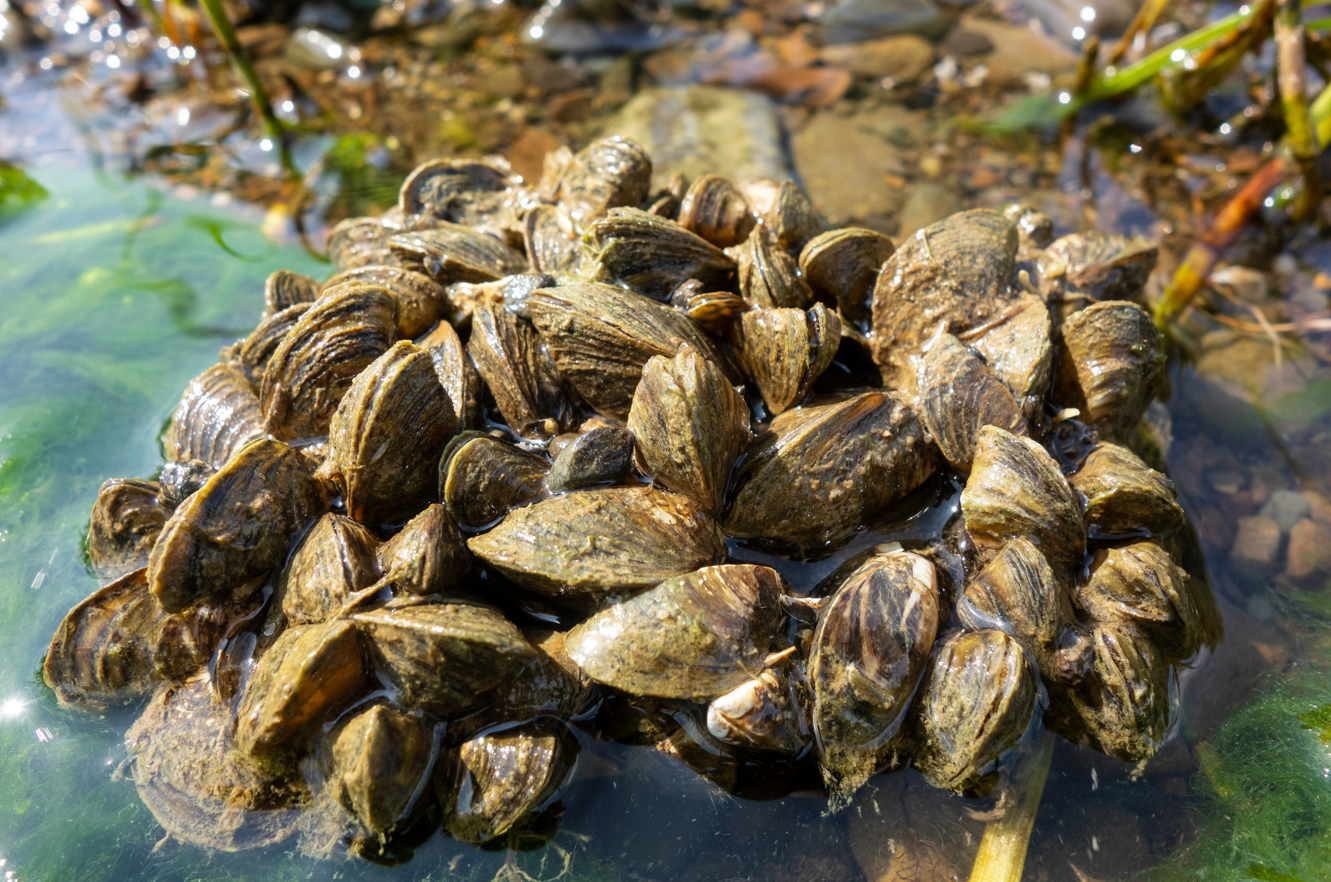America’s freshwater rivers and lakes are losing their secret weapon: freshwater mussels. As an invaluable part of nature’s clean-up crew, their absence could have a nasty knock-on effect on countless bodies of water across the US and beyond.
To highlight the importance of these shelled beings, the US Fish and Wildlife Service (FWS) recently shared an image taken by the Partnership for the Delaware Estuary showcasing their filtration power.
Each tank was filled with muddy lake water, loaded with sediment and algae, but one received the helpful addition of 15 mussels. Within just 90 minutes, the tank with mussels was wonderfully clear, while the mussel-less tank remained murky.
“Never underestimate the power of freshwater mussels,” the FWS posted on social media.
It’s estimated that a single freshwater mussel can pump and filter between 8 and 15 gallons of water every day. Acting like mini-vacuum cleaners, they are able to improve water quality by filtering out bacteria, algae, and pollutants. If a body of freshwater suddenly loses its resident mussels, you can expect water quality to plummet, bringing huge changes to the wider ecosystem.
Freshwater mussels attached to a stone by a lake.
Image credit: TonyTao/Shutterstock.com
Don’t be fooled by their humble appearance, freshwater mussels are truly fascinating animals. Each species has a lifecycle that’s intimately tied to a specific host species, which they use to house and foster their parasitic larvae. The host species is typically a fish, although some species exploit worms, insects, snails, or even salamanders.
Freshwater mussels are relatively immobile as adults, so many have developed ways to attract the presence of their desired host animal, ensuring they come close enough for the larvae to attach. Since they are so static, this method helps to disperse their offspring over a wide range of waterways. Clever, eh?
Many species can live for up to a century, so it’s likely that some freshwater mussels have been lurking at the bottom of a lake since the “Roaring Twenties” and the Prohibition era.
As tough as they may be, they’re facing grave trouble in many parts of the US. In recent years, populations of freshwater mussels have been rocked with mass mortality events across Michigan, Minnesota, North Carolina, Ohio, Oregon, Virginia, Washington, and Wisconsin, according to FWS.
Because of their filtration powers and bottom-feeding behavior, pollution and environmental contaminants are often attributed to mussel mortalities – but no such problem has been identified in many of the recent deaths. One theory is that a novel virus is at foot. A study in 2020 found that a never-before-seen virus in the viral subfamily Densovirinae was more prevalent in sick and dying mussels than in healthy ones, suggesting it might be a factor in the die-offs.
Though an important breakthrough, it’s likely there are many other threats at play, including all manner of pollutants to pathogens.
“If we lose mussels, the rivers, lakes, and things that depend on them will never be the same,” Tony Goldberg, author of the 2020 study and a professor of Pathobiological Sciences at the University of Wisconsin–Madison, said in a statement.
“They’re foundational species for freshwater ecosystems.”
Source Link: This Photo Shows Why You Should “Never Underestimate" Freshwater Mussels
